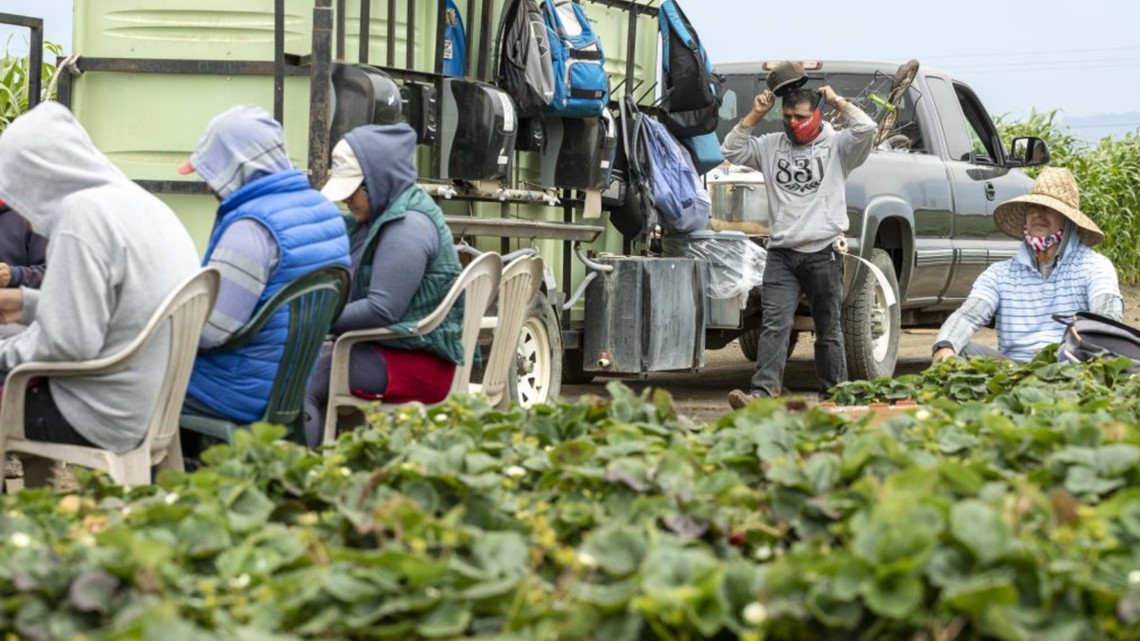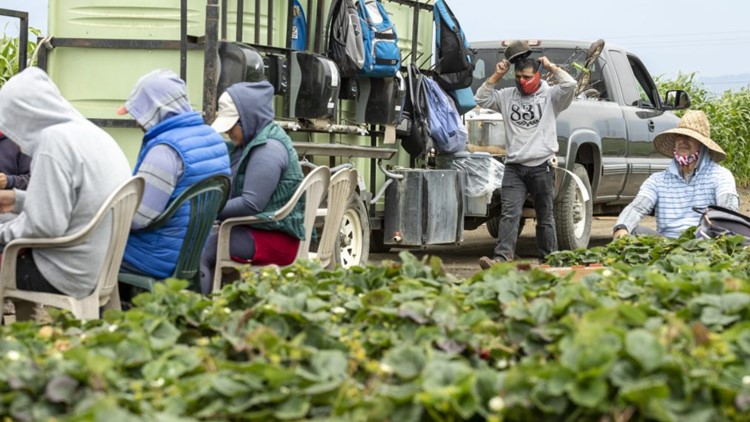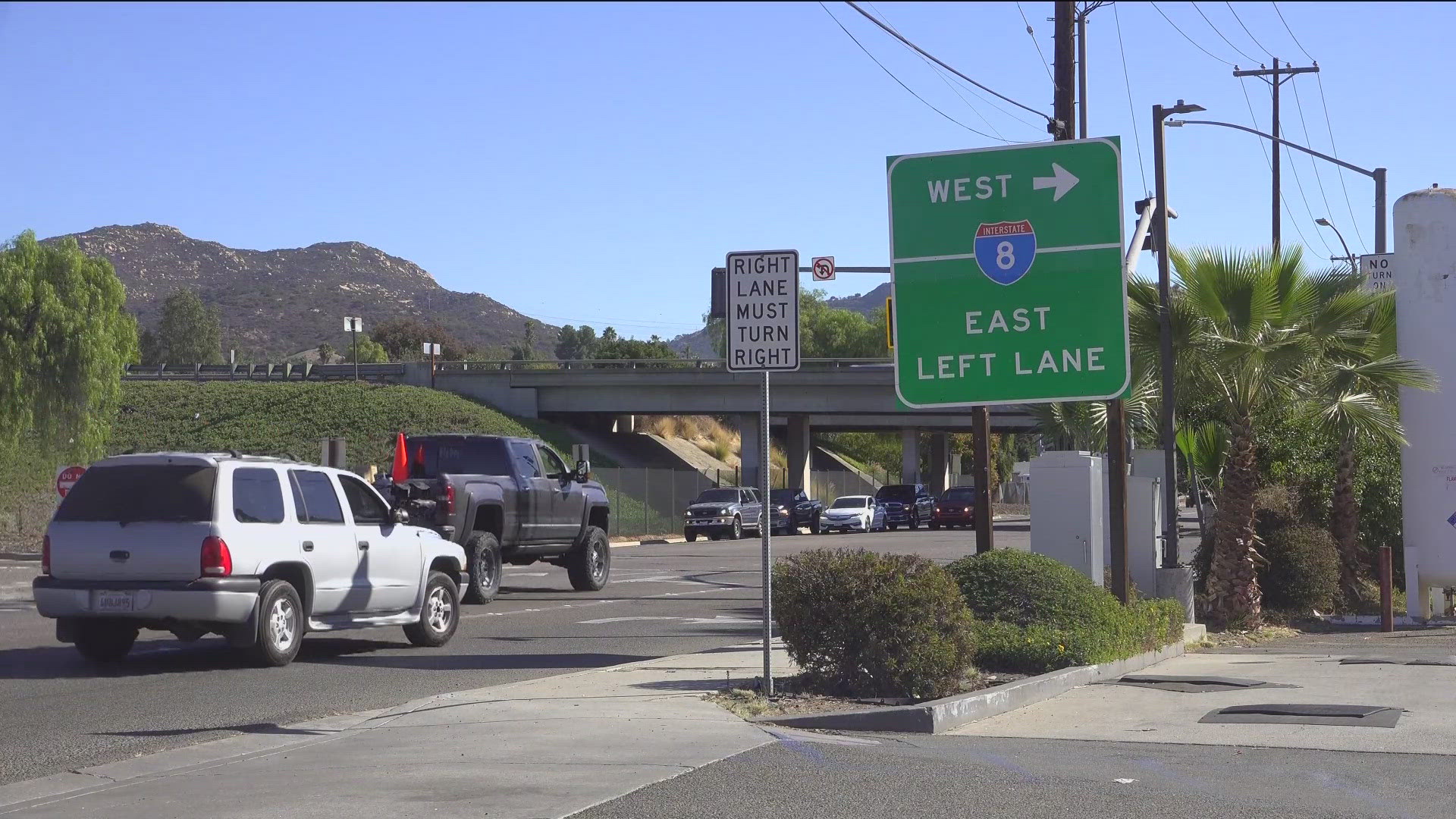SAN DIEGO COUNTY, Calif. — Farmworkers lost out on up to $1.5 billion in grants and loans for COVID-19 safety needs after the USDA committed funds earmarked as such for a food box program.
The USDA announced on Jan. 4 that it planned to spend $1.5 billion in a fifth round of the Farmers to Families Food Box Program. It has yet to commit additional funding for farmworker safety.
“With over 3.3 billion meals distributed to families across this nation, I am proud to share that thanks to the Trump administration’s efforts, the Farmers to Families Food Box Program has an additional $1.5 billion to continue to feed families in need, provide employment and support our small farmers,” Ivanka Trump said in the USDA release. “During these unprecedented times, this Administration will continue to fight for American families and will always put them first!”
The reaction from ag, labor and congressional leaders was swift.
Dozens of congressional leaders signed a letter urging the USDA to prioritize funding for farmworker safety.
The bipartisan letter points out that the Consolidated Appropriations Act of 2021 directed the Secretary of Agriculture to use at least $1.5 billion to purchase and distribute agricultural products as well as to provide grants and loans to protect workers from COVID-19.
More than 70 members of Congress signed the letter urging the USDA to prioritize significant funding for agricultural worker safety, including California Reps. Jimmy Panetta (D-Carmel Valley) and Jim Costa (D-Fresno).
“As the pandemic exploded over the past few months, farmers and farmworkers continued to show up, do their jobs, and put food on our tables,” stated Panetta in a release. “…My colleagues and I will continue to work together on a bipartisan basis, not just to secure that funding, but also to ensure that the USDA does its job and uses that funding to keep our agriculture workers safe and our food supply secure.”
“The United States has historically relied on the backbreaking work of people of color to bring food to our tables…To safeguard our food supply chain and address racial inequities, farmworkers must be at the center of national agricultural policy and COVID-19 packages,” said Teresa Romero, United Farm Workers Union (UFW) President.
‘We were shocked’
The announcement from the USDA in its final days under Secretary Sonny Perdue took legislators, advocates, farmers and laborers alike unawares, who had worked together on language that farmers hoped would help reimburse them for costs incurred in 2020 for PPE, social distancing strategies, testing farmworkers and safety engineering.
All expected incoming Secretary of Agriculture Tom Vilsack to administrate the funds, and worry that this will mean far less for growers and ag employees.
Some, speaking on background, pointed to a quote by Trump Administration advisor Ivanka Trump as evidence this was part of outgoing President Donald Trump’s efforts to improve his image in the final days of his presidency.
“We were shocked by this development, to be quite honest,” stated Sara Neagu-Reed California Farm Bureau Federation (CFBF) Federal Policy Associate Director in an email to The Californian.
CFBF immediately contacted their congressional delegation to pen the letter to the USDA requesting that any additional dollars be put towards the worker safety purpose, Neagu-Reed said.
“It was outlined in the provisions so it must be done on behalf of our growers and farm employees,” she added.


Dennis Nuxoll, Western Growers Association Vice President of Government Affairs, said his organization was very surprised by the outgoing administration’s decision to commit the funds, pointing out that the language itself made clear that the money was to go to both food assistance and worker safety.
“Obviously we have a great need for food assistance, but this language was written to split this need and also look at any unallocated money,” he said. “This was not meant to be exclusive.”
Providing some relief and sharing the burden with producers for costs is something WGA had been advocating for since April 2020, he added.
According to Nuxoll, contracts for the Food Box program will be awarded Jan. 19, the day before President-elect Joe Biden is inaugurated, which likely means the $1.5 billion commitment cannot be undone by Vilsack.
“This makes it more complicated for Secretary Vilsack,” he said. “He’s going to have to do that analysis with a much smaller pot.
“From our perspective, our growers are incredibly interested in making sure their workforce is safe,” Nuxoll continued. “We’re very happy that Congress acknowledges that and is trying to help us share that load and that burden, and we look forward to working with Secretary Vilsack so we can accommodate our need with any funds that are leftover.”
The money prioritized for the Food Box program will toward meat, dairy, fresh fruit, and vegetables, hitting significant chunks of the agriculture industry and feeding millions across the nation.
However, it leaves farmworkers and employers who counted on that money to balance their books from unexpected expenses in 2020 out in the cold.
‘Disappointing’
“It’s really disappointing,” said UFW Secretary-Treasurer Armando Elenes. “They’re trying to take money away from farmworkers that we (the UFW) fought for. To try to assign that somewhere else when farmworkers need more money, not less?”
Elenes pointed out that the 80 hours or two weeks of paid sick leave farmworkers were entitled to under the CARES act expired Dec. 31. With that gone, he said, farmworkers who were lucky enough to find work during the leaner winter months were more likely to report to work sick instead of taking time off to rest and recover.
Elenes hoped the $1.5 billion could be put to use in a similar fashion, paying sick farmworkers to stay home.
“If there’s financial assistance or safety implication, they’re less likely to get (others) sick,” Elenes said.
Maria Elena Manzo, a leader with grassroots leadership organization COPA in Monterey County said she believed additional funding for paid sick leave would be helpful, citing cases of farmworkers who continued to work despite knowing they had been exposed to the virus.
One man, she said, feared losing his job and potential retaliation at work that he continued show up, even though his wife had tested positive for the virus.
“The foreman kept telling him he had to come back to work, and if he didn’t, they’d have to stop the whole crew,” Manzo said. “He was undocumented and really concerned about his job security and about being blamed for the crew stopping. If there was more support, that might not have been a problem. The risk of losing his job was too high.”
PPE, vaccine clinics and reimbursement
Panetta Legislative Aid Riya Mehta said that although she was unsure, she believed the USDA could use the money to cover paid sick leave for farmworkers.
“My understanding is that the USDA has very broad jurisdiction on how to spend the money,” Mehta said. “It could spend (it) on personal protective equipment or vaccine clinics in areas for rural farmworkers. They don’t necessarily have to stick to USDA jurisdiction, but I think it will come down to where USDA has capacity.”
Mehta said the money could potentially be spent retroactively — for items that had already been purchased in 2020 — or it could be focused on future initiatives.
Although agricultural areas across the United States have different needs, vaccine clinics in rural areas were a top priority for many, as well as continued supply of masks and gloves, among other things.
Mehta said she expected to see a united front from growers and laborers.
“This is one of those unique issues like the Farm Workforce Modernization Act where you’re going to get labor and ag together to push the USDA to do this,” she said.
This article is part of The California Divide, a collaboration among newsrooms examining income inequity and economic survival in California.


